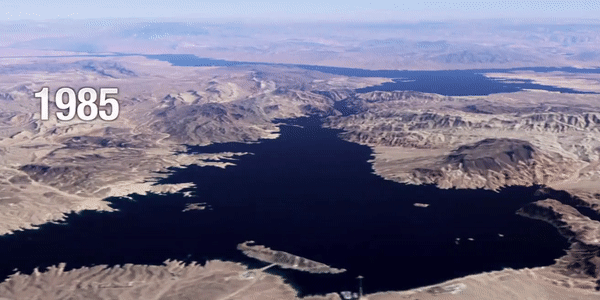Lake Mead's water level drops to lowest point in history
Water levels at Lake Mead, the nation's largest reservoir, have hit their lowest levels in history, adding to concerns about water supply as the western United States remains in the grips of a megadrought.
Lake Mead was created on the Colorado River along the Arizona-Nevada border when the Hoover Dam was built in the early 1930s, and supplies water to millions of people across Arizona, Nevada, California and parts of Mexico. The U.S. Bureau of Reclamation confirmed on Thursday that the reservoir's water level hit a historic low elevation of 1,071.53 feet above sea level.
"This is the lowest that the reservoir has been since it filled in 1937," Patricia Aaron, a spokesperson for the Bureau of Reclamation, told NBC News.
She added that Lake Mead's elevation will likely continue to drop until November, when the agricultural season ends.

The reservoir's capacity is variable, but Lake Mead is defined as "full" when the water line reaches an elevation of 1,221.4 feet above sea level, according to the Bureau of Reclamation. At its current elevation, Lake Mead is at roughly 36 percent capacity.
The reservoir's declining water levels are the result of ongoing drought conditions and increased water demands across the southwestern United States. Seventy-five percent of the western U.S. is experiencing "severe" drought, with almost 55 percent of the region classified as being under "extreme" drought conditions, according to the latest update from the U.S. Drought Monitor.
Much of the western U.S. has been under near-continuous drought conditions for the past 20 years. Scientists have said that human-caused climate change is exacerbating the situation by increasing temperatures, reducing the volume of snowpack and altering precipitation patterns.
Lake Mead and the Hoover Dam provide critical water supplies and electricity to southwestern states. Officials are closely monitoring the situation to determine if states will need to implement additional water conservation measures, Aaron said.
"In August, we'll make a determination on whether to declare a shortage in the lower basin," she said, adding that such a declaration is likely. "That would be for the year 2022. It would mean reduced water deliveries to Arizona, Nevada and the republic of Mexico."
